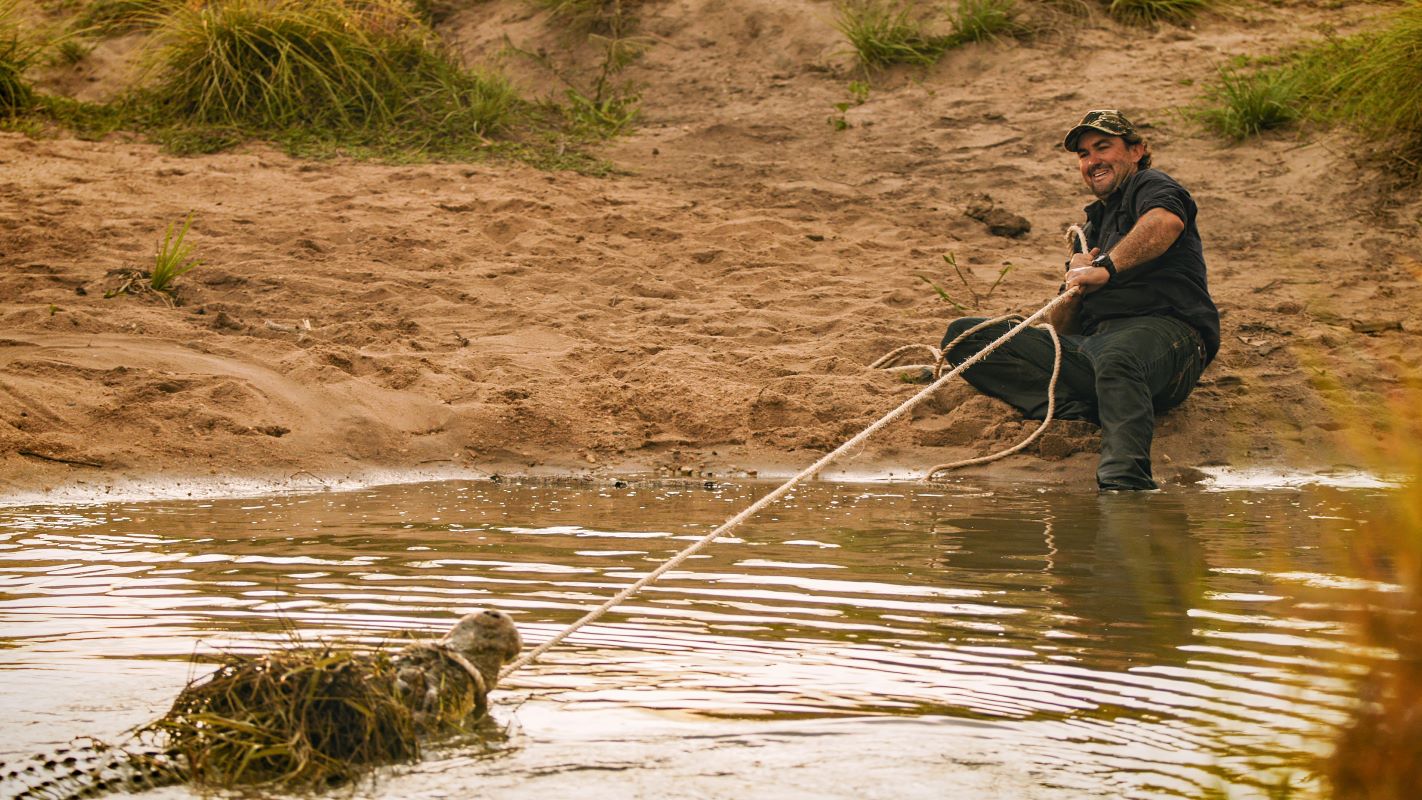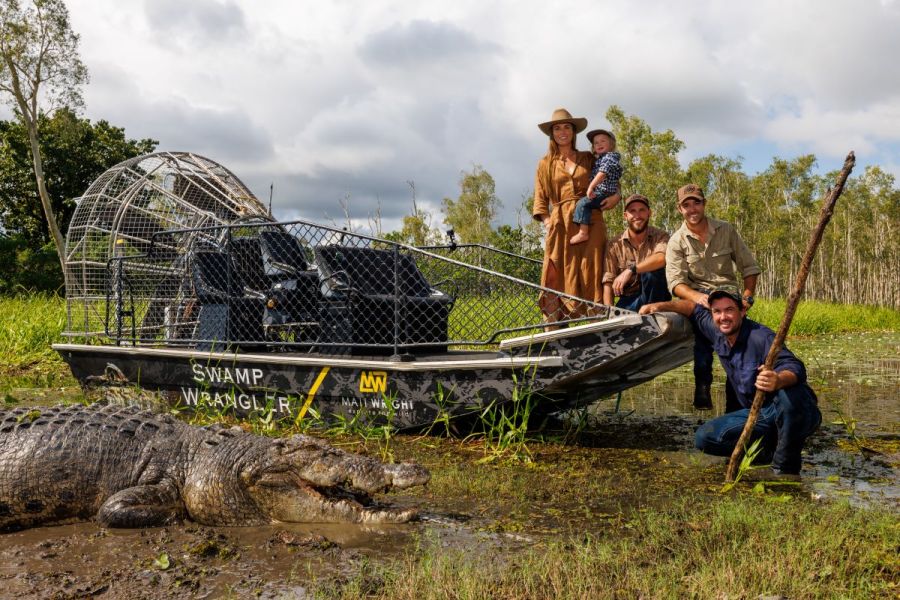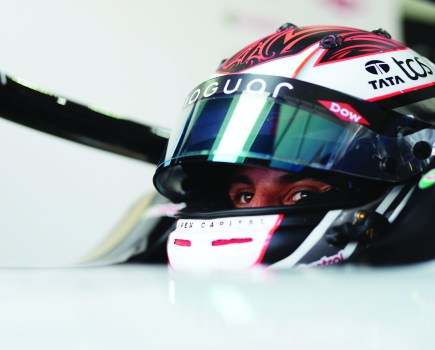Ahead of his new Netflix series, Wild Croc Territory, reptile wrangler Matt Wright explains what it takes to catch a crocodile…
Matt Wright is a modern-day outback wrangler. The 42-year-old Australian presenter has spent his life tracking, catching and rehoming some of the world’s most dangerous animals, and his new Netflix series, Wild Croc Territory, sees him turn his attention to one of the most unruly beasts on earth – the crocodile.
Related: Interview with adventurer & TV presenter Steve Backshall
He’s not the new Tiger King, though. Matt Wright is a conservationist at heart and his team are called on by farmers and wildlife management authorities when there’s a crocodile on the loose to ensure a positive outcome for both sides.
From the techniques and strength required to secure a one-tonne reptile to the near-misses he’s experienced along the way, here’s what it takes to catch a crocodile according to Matt Wright.
Men’s Fitness: How did you get into catching crocodiles for a living?
Matt Wright: “It’s been in my blood since I was a young fella. I was out having adventures and catching a lot of reptiles – brown snakes, tiger snakes, Taipans – as a kid. That turned into a bigger adventure and bigger love of wildlife.
“I was about 17 when I caught my first crocodile. I was working on a [mining] drill rig. They were pumping water out of an area and a crocodile kept grabbing hold of the pump and tearing it to pieces. I said, ‘I’ll catch it,’ and they didn’t really know what to say. I set a trap, caught the crocodile, towed him down the beach, and let him go.”
MF: What are the techniques involved in catching a crocodile?
MW: “The first thing is going in with a stick and a rope and trying to get a head rope over his snout.
“Once you get that on, it half secures him. You see how much energy he’s got – if he needs to burn a bit, you want him to do a few death rolls [which is similar to a pencil roll, but used to kill prey caught in its teeth], but not too many where he’s going to damage himself.
“You put a cloth over his eyes so he can’t see what’s going on and then someone jumps on his back, holds his head, and then we start taping him up.
“If he’s too big, I’ll work from the front – I won’t get anyone to jump on him because he’s just too strong and he’ll flick you off like a tin can. I’ll probably put another rope around his jaws and then a couple of wraps of duct tape.
“Even once the crocodile is strapped and tied up, its head is solid bone. It probably weighs 50-60 kilos, and when swung at a rate of knots it will snap your legs in half in a heartbeat; it’s the same with its tail.
“If you’ve got a 16-footer, it can weigh close to a tonne. You can use cranes to lift them, or vehicles and winches to pull them up on the flat decks and trailers. Or if you’ve got a few big strong men, you can bloody get in behind it and skid them up onto a trailer. We can sling them out on big helicopters as well.”

Matt Wright and his family live in Australia’s Northern Territory. From catching snakes as a kid to securing his first crocodile at 17, reptile wrangling has been in Wright’s blood since he was young.
MF: What is the most difficult catch you’ve ever attempted?
MW: “We went across to Indonesia and spent a couple of weeks using a lot of different methods to catch one crocodile. One night I had him for about two hours on the end of a line, but he went through a fishing net and pulled out the darts we had in the back of him. We lost him, then the big wet weather came and flooded us out.
“The Congo was really tough too. We had a lot of intel that November was a good time to go to catch this massive, rogue crocodile that had just eaten this South African adventurer. Unfortunately, we couldn’t go until February because civil war had broken out. It was a very bad time because of high water. We were there for a month and I caught three or four but not the one I was after. About 12 months later, after it had eaten a few more people, the military went in and shot him.”
MF: How do you mentally approach a crocodile that has eaten numerous people?
MW: “You don’t let your mind play games on you – it’s not this different crocodile that knows how to stalk down humans. It’s still a large reptile; its habits are the same as anything else.
“Mentally, you get in the zone. I’ve grown up watching and seeing how they react to different movements, so I know if a human might be coming in too fast. That also works in your favour because you know how to make them react for the camera – you can get the best slow-mo tail swipes in the mud.
“But it is daunting when you get out onto these rivers that are in a massive flood and there are big torrents. If something happens and we go over, this crocodile is already watching us and waiting. That’s how he gets his people – he goes up next to the canoes, pushes them over, and then eats them.”

“You’re really putting everything into [catching a crocodile] – if you don’t, this thing’s going to swipe and take out one of my boys, so you’re holding on for dear life”
MF: Catching a crocodile is clearly a physical job. How do you make sure you’re fit enough to do it?
MW: “I used to train a lot when I was younger but it’s totally different from any gym work that I’ve done. If we’ve been out for a week, caught a few big crocs and we’re pulling them inside a boat, you really feel it in your hands, forearms, and back. You’re really putting everything into it – if you don’t, this thing’s going to swipe and take out one of my boys, so you’re holding on for dear life.
“When you jump on the back of the croc, you grip down and use every bit of strength to hold that animal down. Every movement you’re doing is precise and with strength.”
Related: How to take your strength training outside
MF: What’s the closest you’ve come to harm?
MW: “I got hit by a croc’s tail and snapped my ankle. I also got flipped up about eight to ten feet one day and landed on my head, which knocked me out and made me see stars. I think I’d rather the broken ankle, because I thought I was going to snap my neck on that one.
“Nothing too outrageous though – a few nips and a few cuts. You can’t afford to be bitten by one of these animals as it’ll definitely take an arm off.”
Wild Croc Territory with Matt Wright is available to stream on Netflix from 12 October.
Images: Netflix







